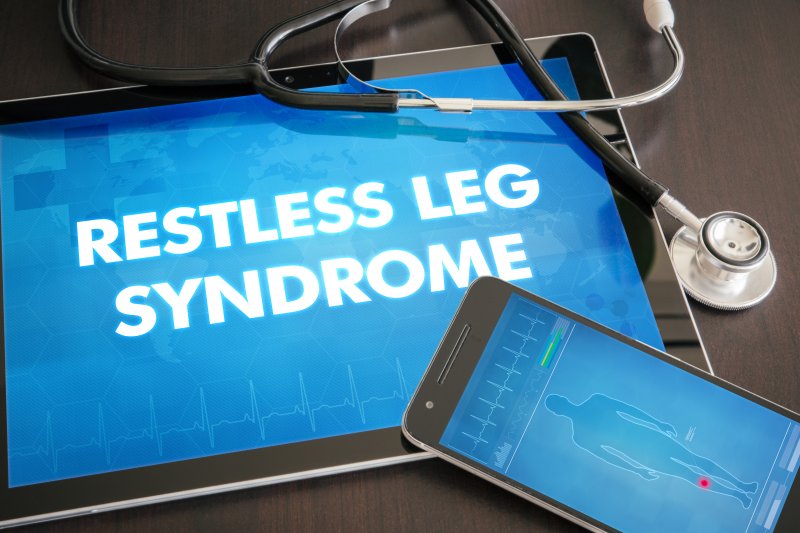
Restless legs syndrome (RLS), a condition characterized by a nearly irresistible urge to move the legs, particularly in the evening, is very common, with more than three million cases diagnosed in the U.S. each year. While most people are probably familiar with RLS, what may be less commonly known is that those with obstructive sleep apnea (OSA) are more likely to suffer from RLS. What is the connection between the two issues? Learn more below.
The Connection Between RLS & Sleep Apnea
Unfortunately, RLS and sleep apnea are two conditions that are more likely to develop as a person ages. While anyone at any age can be affected by either condition, those over the age of 40 are more likely to have OSA, and when it comes to RLS, many who experience severe symptoms are older, with symptoms typically becoming more frequent and lasting longer as time goes on.
One study found that clinically significant RLS (meaning symptoms present at least two to three days per week) was found in 8.3% of sleep apnea patients. In comparison, the study’s control group without sleep apnea showed RLS symptoms at only 2.5%.
Certain Habits Negatively Affect Both Conditions
Specific habits, such as drinking alcohol in the hours before bed and smoking, can lower sleep quality and make both RLS and OSA worse. Caffeine can also negatively impact both conditions, though each person’s tolerance to caffeine differs. If you struggle with either RLS or OSA, be sure to A) Monitor your caffeine intake — a general rule of thumb is to stop drinking caffeine after noon, B) Limit alcohol consumption before bed and avoid overdoing it — having a drink or two in the 3-4 hours before bed is best, and C) Stop smoking if you are prone to the habit. Quitting smoking is, of course, easier said than done, and we encourage anyone who is looking to quit to check out available resources.
Improve Sleep Hygiene to Mitigate RLS & OSA
Good sleep hygiene habits, such as sticking to a regular sleep schedule, making sure your room is “cave-like” (dark, quiet, and cool), and following a relaxing bedtime routine can help manage both conditions and prepare you for the best sleep possible (hint: a hot bath is perfect for bringing relief for RLS). It’s also wise to turn off all of your electronic devices about an hour before bed, as they emit a blue light that has been shown to reduce the brain’s production of the sleep hormone, melatonin.
If you find yourself struggling with both of these issues on a regular basis, you’re far from alone, and fortunately, research shows that there are solutions to help you finally take control of both conditions at the same time.
Studies have found that the use of a CPAP machine for sleep apnea treatment is beneficial for treating RLS concurrently. In fact, one study found that the use of a CPAP enabled more than half of the patients observed to reduce their use of drug therapy for RLS treatment. While there is less research about the efficacy of oral appliance therapy for treating RLS in combination with sleep apnea, it is reasonable to assume that oral appliances, similar to CPAP, would have positive outcomes for treating the conditions.
Start Getting the Rest You Deserve
Are you ready to seek treatment for concurrent RLS and OSA? Dr. Jeff Rodgers is a sleep medicine practitioner with over 20 years of experience treating people with sleep apnea, and a custom-fitted oral appliance from him might be just what you need to finally get your RLS and OSA under control. You can schedule a free virtual or in-person consultation with Dr. Rodgers by clicking here.
